Friday 17 May 2024

The spectacular aurorae that were recently seen by millions of people in parts of the world they don’t usually appear in were truly incredible, and a reminder of the beauty and the wonder of the universe. However they also brought to mind another threat to the global energy system, and society, that we really ought to think about – the threat of electromagnetic pulse disrupting the power and communication grids. I know we have more than enough to worry about, what with the worsening effects of climate change, Gaza, the Russian invasion of Ukraine, Russian and Chinese aggression in several parts of the world, and the rise of authoritarianism and last bit not least the risk of Trump being elected President of the US. But the threat of a major electromagnetic pulse also needs to be on the worry list.
The effects of electromagnetic pulse (EMP)
All electrical and electronic systems can be affected by an electromagnetic pulse (EMP), also referred to a transient electromagnetic disturbance, which is a brief burst of electromagnetic energy which can either occur naturally, such as from solar storms, or be created by the use of a nuclear (1), or specialised non-nuclear (2), weapon. An EMP can occur as an electromagnetic field, as an electric field, as a magnetic field, or as a conducted electric current – all forms of electromagnetic interference (EMI). The electromagnetic interference caused by an EMP can disrupt communications and damage electronic equipment and power grids and many such instances have occurred, including the following.
In 1972 there was major disruption of telephone lines in the US Mid-west.
In March 1989, a solar storm over Quebec caused a province-wide power cut which lasted nine hours.
A 2003 storm temporarily disrupted satellite services, and in one case permanently damaged space borne infrastructure.
In 2017 a geomagnetic storm affected radio frequency and satellite communications around the world, as well as Position, Navigation and Timing satellites.
Although there haven’t been that many reports of damage by the May 2024 solar storm some did occur. The broadband internet connection provided by Starlink reported some temporary degradation in the quality of its signals, and radio and GPS systems experienced some problems. In anticipation of the extreme solar activity, New Zealand’s electrical grid operators took protective measures and temporarily turned off some circuits around the country to prevent equipment damage. Although not damaged, some satellites did stop making scientific observations during the storm.
Solar storms
The recent aurora were the result of an extreme solar storm. Solar storms, which result from disturbances on the Sun can affect the entire solar system, including the Earth and its magnetosphere and the frequency and severity of solar storms is related to the eleven-year solar cycle which reaches its next peak in 2025. Solar storms are caused by sun spots, disturbances in the sun caused by concentrations of magnetic flux that inhibit convention. The cluster of sun spots that caused the recent electromagnetic pulse responsible for the aurora is around 17 times as wide as Earth. Around 8 May, this active region sent at least seven coronal mass ejections, (blasts of magnetized plasma), towards Earth at speeds of up to 1,800 kilometres per second. These waves of charged plasma swamped space-weather detectors. On the scale of one to five that describes geomagnetic storms, this one ranked a five and according to an index of changes in Earth’s magnetic field it was a ‘super storm’.
Scientists expect the current solar cycle to peak in July 2025 and the biggest storms typically happen months to years after the peak. As the solar cycle progresses, sunspots tend to appear closer to the Sun’s equator, increasing the chances of coronal mass ejections that will head directly for Earth rather than out into space,
The Carrington Event, in September 1859 is usually known as the most intense solar storm in recorded history, and created aurora as far south as Havana and bright enough to read by as far south as Missouri. Similar scale events also occurred in 1879 and 1921. On 23 July 2012, a coronal mass ejection, (on the same scale as the Carrington event), narrowly missed Earth (3).
With our dependence on electrical devices and electronic systems increasing as we electrify our energy and transport systems, our vulnerability to the threat of EMI is growing. The scale of the economic damage that could result from a major solar storm was highlighted by joint research at Lloyds of London and Atmospheric and Environmental Research (4) in the US in 2013 which estimated that a Carrington Event scale solar storm today could result in between 20 and 40 million people being at risk of extended blackouts lasting between days and months, and a total economic cost of between $600 billion to $2.6 trillion. Electrical distribution systems, communications systems, all electronic devices and modern vehicles would be taken out of operation by such an event. The delays in restoring power would primarily be driven by the long-lead times on major equipment such as grid-scale transformers. Although the probability of a Carrington scale storm may be small, the impacts would clearly be very large.
Of course EMP can also be caused by nuclear weapons. A limited nuclear exchange using EMP weapons would be devastating and are very well described in ‘One Second After’, a novel by William Forschten (5), which was cited in the US Congress.
We need to increase resilience
The need to increase the resilience of critical infrastructure in response to a whole range of threats including EMP, is recognised by the National Preparedness Commission in the UK (6) and the Cyber Security and Infrastructure Security Agency in the US.
In summary, EMP is a major risk for the power grid and for critical systems and infrastructure such as solar farms and data centres, which are increasingly dependent on electronics and computers, a risk that will grow as the world continues to electrify at exponential pace. There is a technology that can reduce the vulnerability of such systems, High Frequency Alternating Current (HFAC). HFAC, in which AC fluctuates in kilohertz or megahertz rather than the conventional 50 to 60 hertz, was first promoted by Nikola Tesla and after several false starts over more than 100 years it is now finally being commercialized together with some breakthrough EMP technology by a UK company, Energy Research Lab. Widespread use of HFAC would mitigate the risk of EMF as well as bring considerable benefits in terms of energy and material savings. As we increasingly electrify the global economy, we need to consider the risks from EMP and adopt technologies to mitigate the risk.
______________________________________________________________________________
I rarely, if ever, quote Shakespeare, (probably due to bad memories of school days having to read several plays), but here is the whole quotation the title of this piece comes from.
And yonder shines Aurora’s harbinger,
At whose approach, ghosts, wondering here and there,
Troop home to churchyards. Damned spirits all.
A Midsummer’s Night Dream, Act 3, Scene 2
References
(1) EMP from a nuclear weapon is abbreviated as NEMP, Nuclear Electromagnetic Pulse, when it is necessary to distinguish it from a naturally occurring EMP. (2) For a discussion of non-nuclear EMP weapons see:
https://science.howstuffworks.com/e-bomb3.htm
(3) Near Miss: The Solar Superstorm of July 2012. NASA. 2014.
https://science.nasa.gov/science-research/planetary-science/23jul_superstorm/
(4) Solar storm risk to the North American electric grid. Lloyds. 2013
https://assets.lloyds.com/assets/pdf-solar-storm-risk-to-the-north-american-electric-grid/1/pdf-Solar-Storm-Risk-to-the-North-American-Electric-Grid.pdf
(5) One Second After.
https://www.onesecondafter.com
(6) UK Severe Space Weather Preparedness Strategy. September 2021.
https://assets.publishing.service.gov.uk/government/uploads/system/uploads/attachment_data/file/1020551/uk-severe-space-weather-preparedness-strategy.pdf
Thursday 25 April 2024
At the end of November 2023 I was fortunate enough to be invited to make the keynote speech at WTW’s European Renewables Conference in Budapest. It was great to get an insight into what the latest trends are in the renewables industry, and given that WTW is a leading global renewable energy risk advisor and broker, look at the sector from the perspective of risks and how we manage them. The text below is an edited, and slightly longer version of my remarks. The intention was to consider the journey to net zero and provide an overall perspective on the opportunities, challenges and risks. It starts with my personal story of how I got to work on the energy transition and looks at what we can learn about the present and the future from history.
Well good morning. It is a great pleasure to be here in Budapest and to be addressing the WTW European Renewables Conference. It is great to see such a large event as when I was first working in renewables, back in the late 1980s and early 1990s, we could literally have the entire UK wind industry, which was most of the renewable industry at the time, meet in an average sized meeting room – and we did meet like that a few times. The growth of the renewables industry in the nearly 40 years since then has been amazing to watch and is a real illustration of a major energy transition in action. Back then most people in the energy industry still thought of wind as ‘alternative’ and a niche that would never become significant in scale. In fact it reminds me of something my favourite science-fiction writer Arthur C. Clarke once said:
“Every revolutionary idea seems to evoke three stages of reaction. They may be summed up by the phrases: first people say ,‘It’s completely impossible’, then they say ‘It’s possible, but it’s not worth doing’. And then they say ‘I said it was a good idea all along’.”
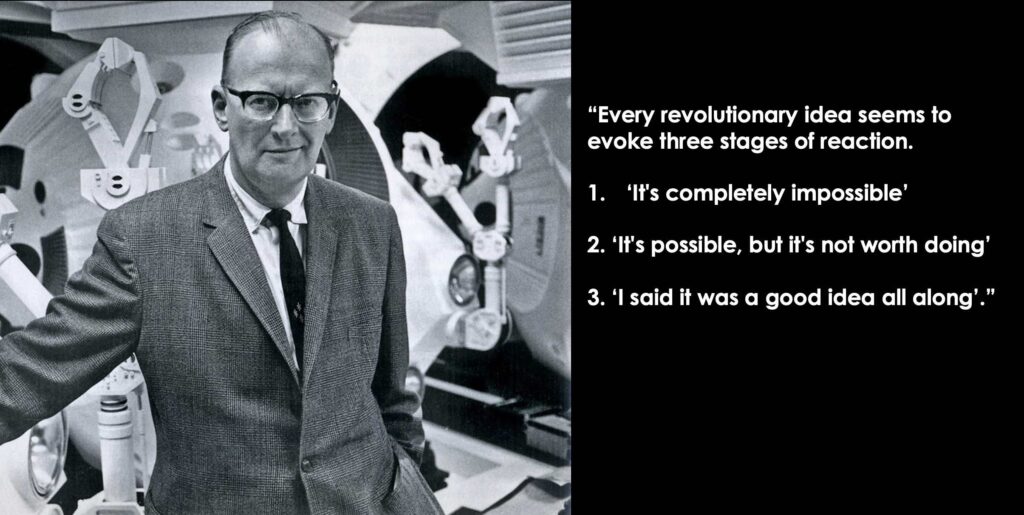
When the renewables revolution started the electricity industry establishment was firmly in the ‘it is impossible’ camp – grid operators around the world said if you have more than a few per cent of renewables on the grid it will cause massive instability. Now we have many countries where levels above 50% are common and there have been many days where levels of nearly 100% have been achieved in various markets. There can no longer be any doubt that very high levels of variable renewables are possible. In renewables we seem to be firmly moving to stage 3 – ‘I told you it was a good idea’, even though there is a vocal minority still saying 2 – ‘its not worth doing’, or even 1, ‘it will never work’.
Anyway, first of all a brief personal introduction. I’m a child of the 1960s, I grew up entranced by the Apollo moon landings and wanted to be an astronaut.
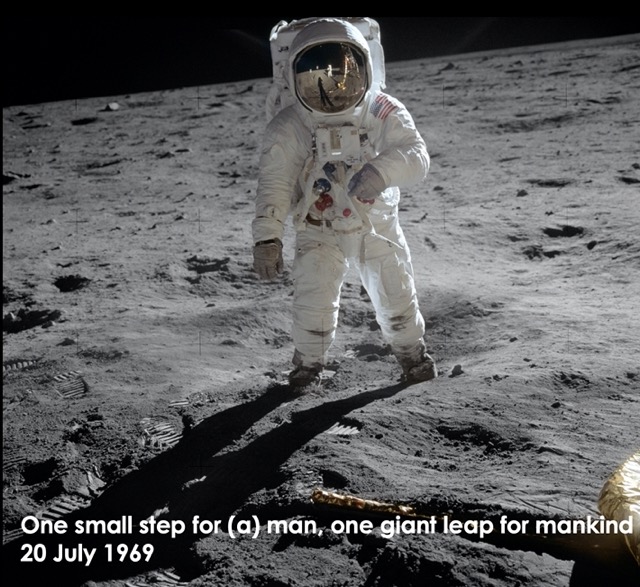
Well, in Britain in the 1970s that wasn’t really a viable career plan and when it came time to go to University the whole aerospace industry was in deep recession. So that, plus the fact that I didn’t want to end up building missiles led me to my second choice of degree subject and I took a unique inter-disciplinary degree focused on energy. So where did my interest in energy come from? Well there are several strands. Firstly, when I was about ten we went on a family holiday to Wales and we visited the Ffestiniog pumped storage hydroelectric plant which made a big impression on me.
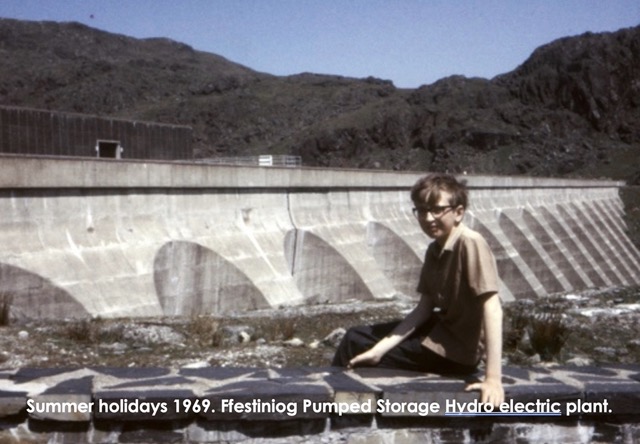
As an aside this year I took my 13 year old grandson to the Cruachan pumped storage hydro-electric plant.
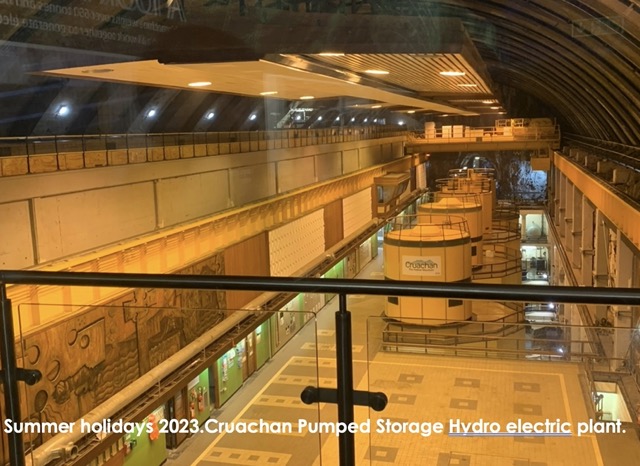
It will be interesting to see if that visit influences his career choice. I would just like to emphasise that we do do other things on holiday than visit energy infrastructure. If you haven’t ever visited a pumped storage hydroelectric plant do it – they are seriously cool big stuff. So back to the influences that made me study energy. A big one of course was that we had the 1973 oil crisis and in the UK, because of the miners strike we had the three day week, when industry was only allowed to work 3 days a week and homes had rolling powercuts. I remember being upset because the power cuts always seemed to come in the middle of my favourite TV shows and then having to do homework by candle light. There’s nothing like power cuts to make you realise how dependent on modern energy supply we are, and of course much more so today than in the 1970s.
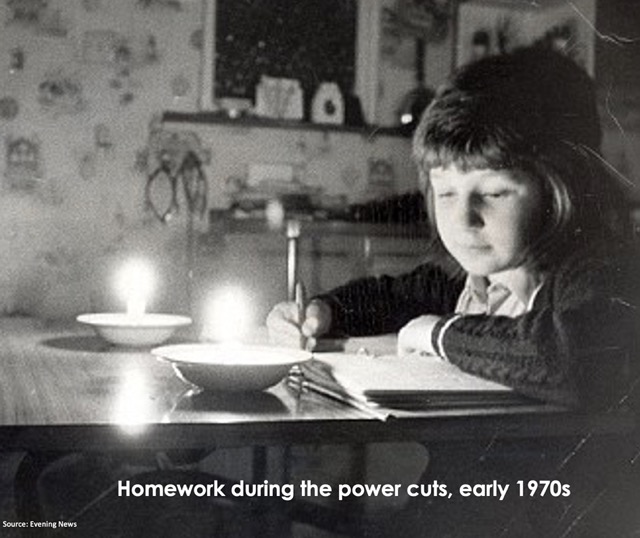
Finally, the 1970s were the time when the modern environmental movement emerged. The first ever Earth Day was held on 22 April 1970, and in 1972 the influential book ‘Limits to growth’ came out summarising work supported by the Club of Rome that used computer modelling that showed that given exponential economic growth and finite resources we would run out of resources and society would break down. We were convinced that energy resources, which back then meant coal, oil and gas, would physically run out and run out soon. As I am still an aspiring astronaut I am always pleased that the environmental movement was influenced by the amazing Earth from the Apollo missions, like Earthrise taken on Apollo 8.

Anyway, those factors led me to a career in energy. After my first degree I focused on energy efficiency, energy services and distributed energy as they seemed to be the future and I think that turned out to be a sound decision as they have kept me busy, and employed ever since, and allowed me to work all over the world and provided the privilege of being able to invest in SME’s participating in the transition through my business ep Group which I started in 2012.
So that’s a little bit about my personal journey through the energy transition but what about the European and global journey to net zero? To understand the present and the future it is really important to understand history. It is not that history repeats itself exactly but we can certainly learn a lot from history and understanding the history of energy transitions is useful.
In my degree we studied previous energy transitions but energy transition was not a phrase widely used, even within the energy industry. President Jimmy Carter in his ‘Address to the nation on energy’ in April 1977 did say:
“Twice in the last several hundred years, there has been a transition in the way people use energy”
and then went on to describe the transition from wood to coal in the 1700s which led to the industrial revolution, and the transition in the 1900s to oil and gas.
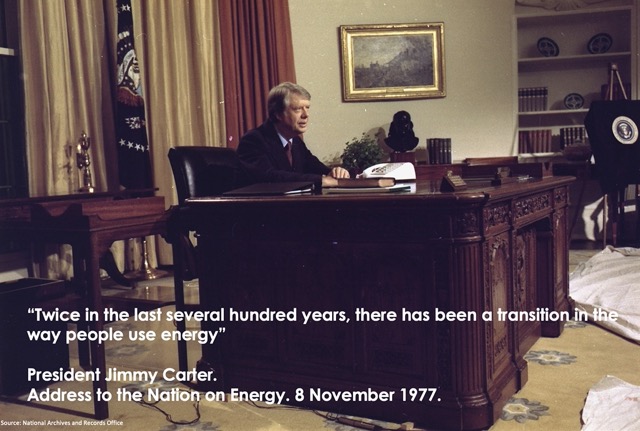
But as a phrase ‘energy transition’ didn’t catch on back then but now it is recognised by most people, except perhaps a few right wing political and media figures, that we are firmly in the middle of an energy transition. And I say the middle deliberately. It is hard to define exactly when an energy transition starts or ends, but this one probably started in that post-1973/74 oil crisis decade of 1975-1985 so about 40 years ago, and we probably have about another 40 years to go on this one. It is the fourth energy transition.
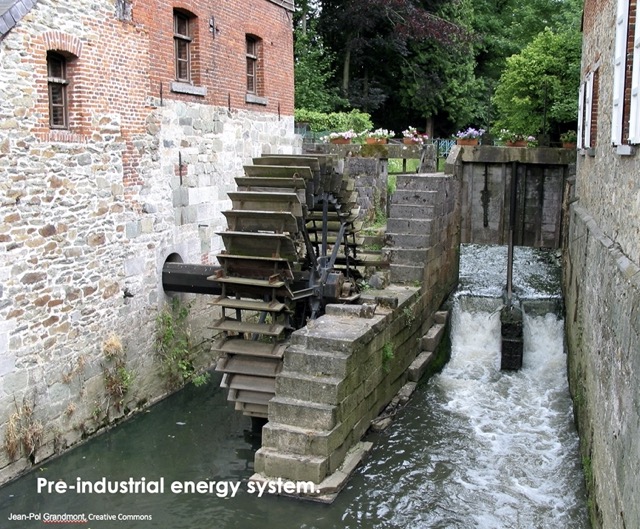
The first energy transition was the transition from biomass and muscle power to coal. Before the Industrial Revolution, people burned wood and dried manure to heat homes and cook food, while relying on muscle power, wind, and water mills to grind grains. Transportation was aided by using carts driven by horses or other animals. In the 16th and 17th centuries, the prices of firewood and charcoal skyrocketed due to shortages. These were driven by increased consumption from both households and industries as economies grew and became more sophisticated.
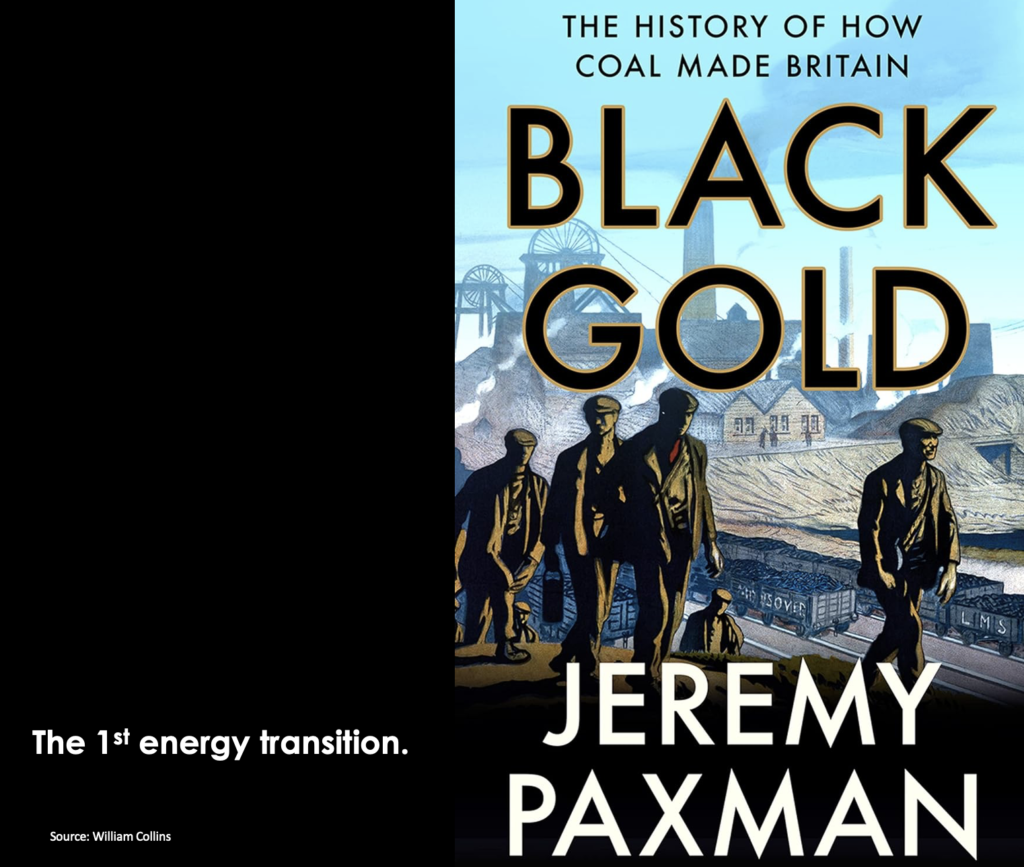
Consequently, economies like the UK needed a new, cheaper source of energy. They turned to coal, marking the beginning of the first major energy transition. The industrial revolution was built on coal and really started in Coalbrookdale in 1708 when Abraham Darby started using coke rather than charcoal to make iron pots. If you want to see the very spot where the industrial revolution started go to Coalbrookdale in Shropshire. That is ground zero for the industrial revolution. If you really want to understand that coal industry with all of its obscenities like child labour and worker exploitation read Jeremy Paxman’s book ‘Black Gold: The History of How Coal Made Britain”.
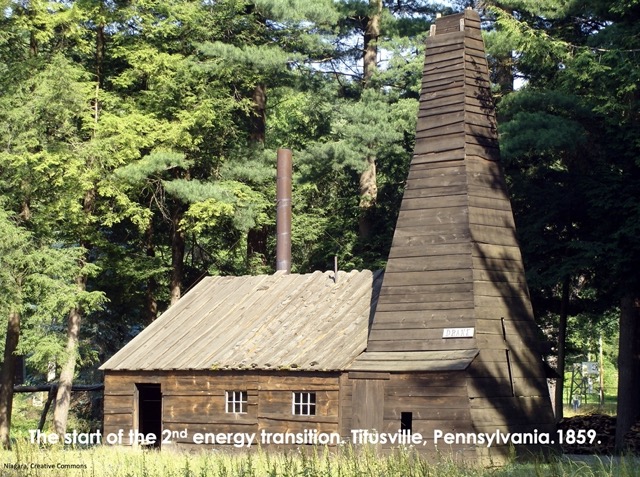
In 1859, Edwin L. Drake built the first commercial oil well in Pennsylvania, but it was nearly a century before oil became the major energy source. Before the mass production of automobiles, oil was mainly used for lamps. Oil demand from internal combustion engine vehicles started climbing after the introduction of assembly lines, and it took off after World War II as vehicle purchases soared.
Similarly, the invention of the Bunsen burner opened up new opportunities to use gas in households, originally towns gas. The discovery of large quantities of ‘natural gas’ in the 1960s/70s – particularly off-shore, led to gas became a major source of energy for home heating, cooking, water heaters, and other appliances, and then ultimately power generation.
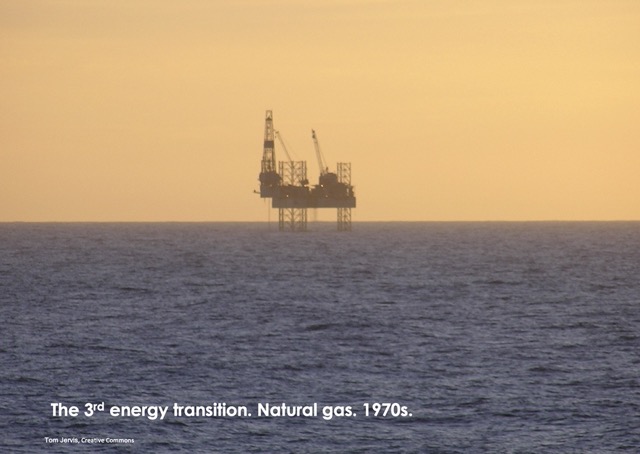
Then there is the fourth energy transition, the one we are living in today, witnessing, and helping make happen, the transition to a low or zero carbon energy system.
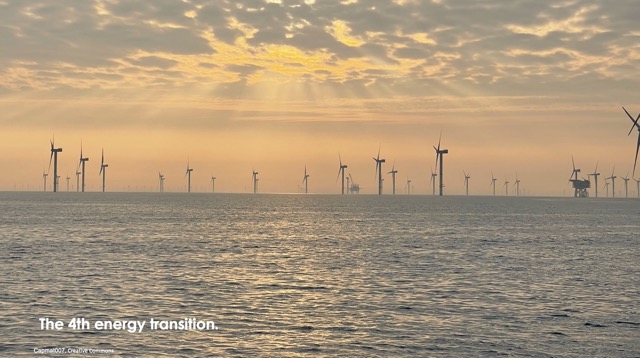
The scale of the current transition is unprecedented. It is a massive challenge – nothing less than changing out all of energy generating and using infrastructure which of course means all of our infrastructure – every fossil fuel power station, every building, every factory, every car and truck, every ship, every aeroplane.
But before becoming too discouraged it is important to understand the nature of transitions. Energy transitions tend to happen in S curves and this has only been recently recognised. S curves are reason for optimism.
S curves are by their nature disruptive – but they don’t feel rapid in the early years and then things accelerate rapidly. As the adage goes: ‘under an S curve things change gradually, and then suddenly’. S curves have five stages:
- Solution search
- Proof of concept
- Early adopters
- System integration
- Market expansion
If I were to characterise where we are in the current energy transition I’d say that we are just moving out of early adopters towards system integration. That may seem strange but when you look at the curves, and the continuing cost down curves – particular for solar – that is the inevitable conclusion. What that really means is that for all the massive growth in renewables we have seen in the last 20 years – you ain’t seen nothing yet. When people get the impression that we are a long way off course that is often driven by implicit linear forecasting rather than using S curves. When you look at S curves the growth in renewables can still be on target for achieving a net zero power system by 2050.
This transition is different in a way because it is the first one that we started consciously, or at least semi-consciously, because we were thinking about questions around sustainability, oil and gas running out one day. The other transitions happened because the new source of energy was cheaper and more convenient than the old.
There are three well known drivers of the current transition and they came in a specific order: first we had sustainability – which ironically in itself is not sustainable as people won’t pay a green premium – or at least not for long, then a few years ago we moved into cost savings as solar and wind fell below the cost of fossil fuel generation, and in the last two years energy security has re-emerged as an important driver. Since the invasion of Ukraine all three drivers have been aligned and that has accelerated the change. Now we have a less well known but very important fourth driver which is emerging – and that is the finance industry becoming proactive and driving change rather than just financing whatever comes along. The finance sector is radically changing, and driven by regulation and demand from asset owners it will push decarbonisation through its loans and its investments. But that’s a lot of green wash I hear you say, true there is green wash but the whole finance sector is shifting dramatically and that is a really powerful force. If you have to meet certain decarbonisation criteria to get investment or a loan or a mortgage on a house you will do it. So, sustainability, cost, security and the finance industry becoming proactive are now all pushing in the same direction and that is a reason for optimism.
We tend to focus on renewable power when talking about the transition but there are of course two other aspects of the journey to net zero which have to be considered, the electrification of heat and the electrification of transport.

Heat is vital for lots of things from keeping us warm in winter, which requires an internal temperature of 20oC, through to making glass which requires temperatures of about 1,300oC, and making specialist ceramics which requires temperatures up to 2,800oC. Over 44% of total UK energy demand is heat, and that accounts for 37% of emissions. Peak heat load is 3 to 4x peak electricity load. Compared to decarbonising power, decarbonising heat is really hard.
For low temperatures such as domestic heating, the way forward is a combination of heat pumps and energy efficiency. The gas industry wants you to think the future is hydrogen in the gas network but that is a classic case of an incumbent lobbying for something that is nonsense technically and economically in order to maintain their position. For medium temperatures, the biggest proportion of heat in industry, we are starting to see higher temperature heat pumps come in. For high temperatures, then the answer is not so clear. Direct electric heating is possible in some cases, in others the answer will probably be synthetic fuels and hydrogen.
We are also seeing the rapid electrification of road transport. This and the electrification of heat means demand for electricity will go up – but so will the opportunities for demand flexibility. We already have heat pumps with thermal stores that can provide grid flexibility, and we are moving towards grid integrated buildings which generate more power than they use, at least at certain times, and soon we will have vehicle to grid storage. Some people of course say things like: ‘we can’t possibly electrify heat and transport because we would need to double the amount of electricity we need’. Demand growth is a factor but you have to remember that electricity demand in most mature markets is falling due to improved energy efficiency of appliances and lighting, as well as the integration of devices. All of those developments are based on digitisation. And that brings me to my specialist subject, energy efficiency.
It may surprise you but when you do the analysis, improved energy efficiency has delivered more energy services over the last few decades than any other source of energy, roughly three times as much as renewables. The problems with energy efficiency are:
- is it largely invisible, although we are working on some projects that will meter energy efficiency and help to change that
- it is in very small units – as small as individual LEDs as opposed to large power generation stations, and that makes it hard to invest in.
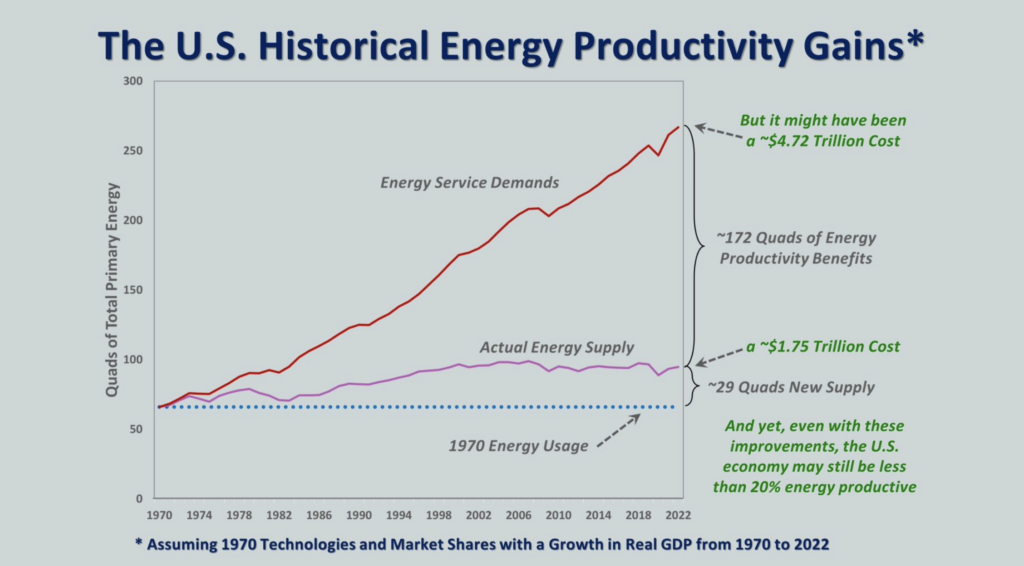
However, we should never forget that the cost-effective potential for energy efficiency is still huge and that every day, in every investment decision, we are missing opportunities for improved efficiency that lock us in to higher than needed energy use and emissions, and lock us into higher than needed investment in energy supply. Don’t forget as well that with a high proportion of renewable generation every electrification decision, whether it is for heating or for cars, leads to a big reduction in primary energy use and emissions. We really need to really think ‘energy efficiency first’ and energy efficiency is the smartest way to manage risk. I think we are about to get serious about energy efficiency and that the next phase of the energy transition will be focused as much on the demand side as the supply side.
It is clear that the end game of the transition in the power sector is a world where renewables make up the majority of power generation, with solar everywhere, and a lot more wind power. That of course means we need flexibility and that will come from two sources, storage and demand flexibility. As you know, storage is taking off. In the UK there is something like 40 GW of storage in planning, which is half the entire capacity of the grid. Now we all know that won’t all be built but even so, it is amazing given it is only a few years since we saw the first battery energy storage system. It is clear that lithium ion batteries have become the core technology for stationary short-term storage but of course we also need long duration energy storage, and we need it at big scale. I talked about pumped storage hydro at the beginning and of course that is a useful technology but sites are inherently limited. It is interesting that there are a number of private sector investments in new pumped storage hydro, including the £500m 600 MW expansion project at Cruachan. As well as pumped hydro storage there are a couple of other technologies that look scalable, liquid air storage, and compressed air energy storage (CAES) in salt caverns. The latter is an old idea where after a forty year gap there is now a lot of development from companies like Corre Energy. The emergence of large quantities of offshore wind has made CAES attractive and each site can be 300 MW. CAES of course can be Long Duration and that is critical. Other technologies like lifting heavy weights up and down look less serious.
The other part of flexibility that is widely under-appreciated is demand response. All the trials around the world show that you can induce significant reductions in demand with the right mix of technology and incentives. In the California heat waves it was companies like Ohm Connect who offer demand response that kept the grid operating.
So that’s the energy transition handled. The optimistic vision is: lots of renewables, lots of storage, lots of flexibility, lots of energy efficiency, electrification and digitisation. Yes, the scale is huge, but all the drivers are pushing in the right direction, and we are only just entering the real growth curve of the S curve. So what are the risks? What are the headwinds?
Of course in energy transitions, things never go smoothly and again looking at history is informative. If we look back at the industrial revolution, and this transition will be just as significant and as impactful as the industrial revolution, we see things didn’t go smoothly. The innovators often don’t survive.
Marc Brunel, the father of Isambard Kingdom Brunel, went to debtors prison for £5,000. His Thames Tunnel, which was the first ever tunnel under water and was called ‘the 8th wonder of the world’, ran out of money half-way through and was never a financial success. However, it is still there and used every day by London Transport. Incidentally if you haven’t visited Brunel’s Thames Tunnel make sure you do it, it is amazing.
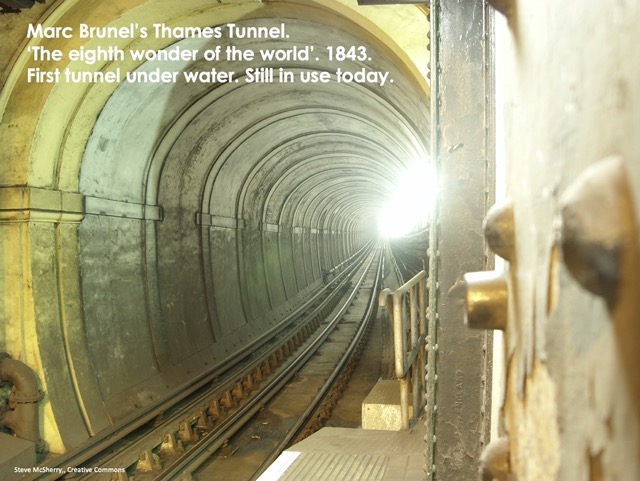
Marc Brunel’s son, Isambard Kingdom Brunel of course is famous because of his work building the Great Western Railway and the great steam ships the Great Britain and the Great Eastern which were the technological marvels of their day.
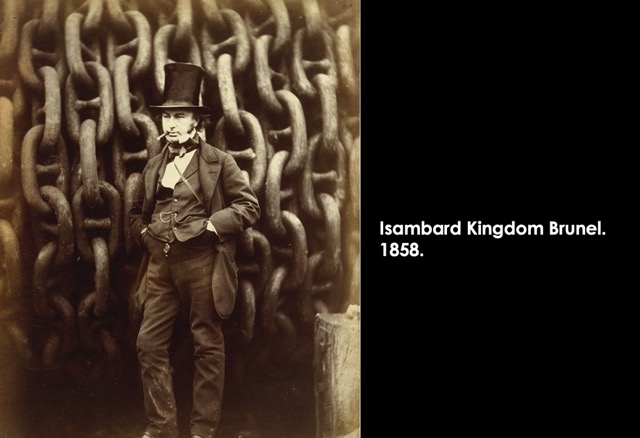
But even Brunel got it wrong. He backed broad gauge railways and then had to rip them up and rebuild with standard gauge, even though it was much more comfortable and enabled much faster locomotives. He also built the atmospheric railway which was powered by vacuum – but that wasn’t economically viable. It was the Elon Musk Boring Company of its day. The great steam ships never really made money but they did lay the foundations for transoceanic shipping.
In Victorian Britain there was a massive boom in railway building, licences were granted and companies were formed, money raised, speculators bid up land, and there was a massive stock market bubble in railway companies. And of course, inevitably there was a massive bust and lost of people lost money. Much of the infrastructure was built however, and much of it we are still using today, 150 years later.
In something very similar to railway mania in 1990s we had ‘telecom mania’, then we had ‘internet mania’ in the shape of the dot com boom and bust, Then In 2003 to 2008 we had ‘clean tech mania’, now we are seeing ‘hydrogen mania’. There is something about markets and the way that they operate!
If we look at road transport there were other examples of how transitions don’t go smoothly. As early as 1896 no less people were worrying about pollution from gasoline engine cars.
Pedro Salom, a chemist, wrote;
“all the gasoline motors which we have seen, belch forth from their exhaust pipe a continuous stream of partially unconsumed hydrocarbons in the form of a thick smoke with a highly noxious odour”.
Obviously the control of combustion and fuel quality was not what it is today – and as well as pollution people worried about frightening the horses. Salom was not without a vested interest here as he co-founded the Electric Carriage and Wagon Company Inc. at the start of 1896. By 1900 the great Thomas Edison had decided electric cars were the way forward – they were outselling steam cars and gasoline cars at the time – and he wanted to replace the heavy lead acid battery. He spent three years testing different alkaline batteries looking for longer life, durability, safety and a much better weight to energy ratio – all those parameters we continue to seek in battery technology today. He settled on using a positive pole of iron and a negative pole of superoxide of nickel with an aqueous solution of potassium hydroxide as an electrolyte – what we call today a nickel-iron battery. By the way his method of crash testing them was having a random sample thrown from a third floor balcony – a great image. I suppose he didn’t have to worry so much about health and safety or consult his insurance company.
In May 1901 Harper’s Magazine said:
“the famous inventor considers his new storage battery the most valuable of all his inventions, and believes it will revolutionise the whole system of transportation“.
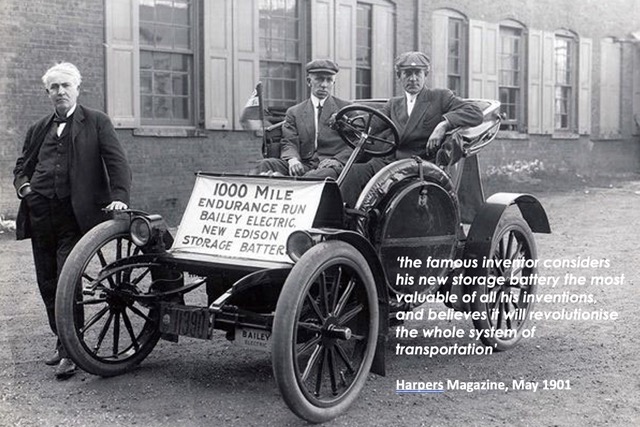
Edison built an assembly plant which opened in May 1901 to produce “500 cells daily” with a target cost of $10 and sales price of $15 – an early example of a ‘giga-factory’. The plant produced different designs optimised for different vehicles including cars and delivery wagons plus illuminating train carriages. Edison’s fame and great ability to get publicity led to a good start with strong sales for a year or so before technical issues were discovered. Cells leaked and power losses of 30 per cent occurred under repeated charging and discharging. Edison continued to innovate – adding nickel flake within the positive plate increased watt hour capacity per pound by 40 per cent – but in the end the market rejected electric vehicles as the gasoline engine improved and the problems with batteries were recognised. The business – The Edison Storage Battery Company – carried on making batteries for other applications and was sold to Exide in 1972 who then stopped making nickel-iron batteries in 1975.
In the early days of the electricity industry Thomas Edison of course was also one of the protagonists in the ‘war of the currents’. He was convinced DC was the answer whereas Westinghouse and Nikola Tesla favoured, correctly as it turned out, AC. The current wars went on for about a decade and involved lots of dirty tricks until Edison eventually accepted AC was the way forward, and of course he wrote the history books. The movie, ‘Current Wars’ is a god dramatization of these events.
Let’s talk about technology development risk.
There is a view, what can be characterised as the Bill Gates view, that we need to develop new technologies to get to a net zero energy system – it is all about innovation. Bill says you really need to innovate new technologies. The alternative view, which can be called the Jigar Shah view, and is the one I subscribe to, is that we need to deploy, deploy and deploy. The trouble with innovation of course is that a) it is risky and b) the innovator rarely makes money.
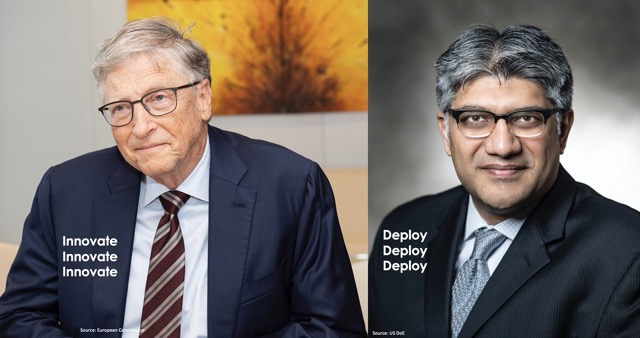
Of course the picture is more complicated than ‘innovate, innovate, innovate’ versus ‘deploy, deploy, deploy’ and we will always innovate as it is in our DNA. I think the nuance is that the innovate approach depends on big transformative innovations which are high profile, things like Direct Air Capture, Small Modular Reactors, or even fusion power. These are the kinds of things that journalists and politicians like – the bright shiny toys, and all things Bill Gates has invested in. The deploy, deploy, deploy model in reality is based on stuff that we already know works but with constant, incremental innovations that make deployment cheaper, particularly with scale. Incremental innovation in small things, things like an easier, cheaper way of mounting solar panels is at least as powerful, if not more so than big disruptive innovation. It is just not so sexy to work on or for journalists to write about, and not so good for politicians to have their photos taken alongside.
Taking technology development risk is clearly an equity risk – not an insurance risk. Those kinds of risks have to be taken by equity investors, either big corporates or VCs, and by governments funding R, D & D. There is scope, and a good argument, for the public sector to address these risks through mechanisms such as guarantees – and we have seen some of that in the Inflation Reduction Act, and there are likely to be similar mechanisms within the EU’s Net Zero Industry Act. That is a good use of public money that national and regional green banks or infrastructure banks should be doing much more of but they rarely do – they more often seem to end up investing in things that the market likes anyway, which is a crowding out private investment not crowding it in.
Of course there is always political risk. As some of you may realise I have an unusual but very well known surname, at least well known in the UK, Fawkes. I am related to Guy Fawkes, who in 1605 tried to blow up the Houses of Parliament, an event we still commemorate every 5th November with bonfires and fireworks. My name always makes visiting Parliament particularly interesting and as I often say he was the only man to go to Parliament with totally honest intentions. So, not surprising I am interested in politics and policy.

A real risk to achieving net zero is a lack of political leadership. We hear lots of talk about commitment but at the same time we have seen: subsidies coming and going – often with little or no notice in several countries and in some case retroactive changes: the resultant law suits about subsidies change; and more recently in the UK a real step back from net zero targets.
We really need to step up our policy commitments and politicians need to take a longer-term view. They also need to focus on the benefits of decarbonisation, not only reductions in carbon, but also cost savings, wider economic benefits, increased energy security, as well as improvement in health. A real issue is that politicians still seem to view net zero as a cost and a burden, and something that is optional.
We need to see the kind of leadership that John F Kennedy showed when he declared:
“We choose to go to the moon. We choose to go to the moon in this decade and do the other things, not because they are easy, but because they are hard, because that goal will serve to organize and measure the best of our energies and skills, because that challenge is one that we are willing to accept, one we are unwilling to postpone, and one which we intend to win, and the others, too.”
In the same speech JFK said:
“These are extraordinary times. And we face an extraordinary challenge.”
“No role in history could be more difficult or more important.”
“There is no single simple policy which meets this challenge.”
“I believe we possess all the resources and talents necessary. But the facts of the matter are that we have never made the national decisions or marshalled the national resources required for such leadership. We have never specified long-range goals on an urgent time schedule, or managed our resources and our time so as to insure their fulfillment.”
We need leadership like that to address climate change in the same kind of language. I’d vote for a politician who talked like that about climate change.
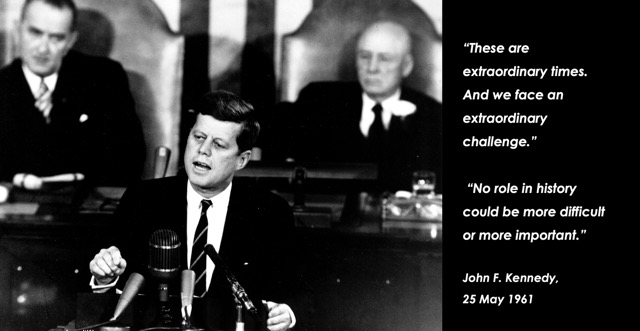
Some of the decisions to roll back policy promises, notably Prime Minister Richi Sunak’s recent change on net zero are clearly putting net zero and renewables firmly in the culture wars, relating renewables and EVs to ‘wokeism’. This is similar to what we see in the US with the former President’s crazy ranting about ‘windmills’ and it is very dangerous – dangerous to democracy.
It really signals a political threat outside the obvious ones about policy change – populism and authoritarianism seem to be on the rise nearly everywhere and represents a real and present danger to democracy. Right now, on the whole, the authoritarian wing seems to be anti-renewables, probably as they are in part funded by oil and gas interests. As they always say ‘follow the money’. However, we can also see a scenario where the effects of climate change get worse and an authoritarian government uses that as an excuse to over-ride personal and corporate freedoms. If you are interested in what that could look like read some of the latter science fiction works of Ben Bova.
On top of that we are now living in a much more dangerous world than even a few years ago, with shifting geopolitical balance. Look at what the Chinese are doing in the Spratly Islands – those artificial islands are not for renewable energy. Then of course we have Russia, which is persecuting a war in Europe. And of course we have the tragic events in Israel and Gaza that could escalate much wider at any moment. In the 1970s we saw energy being used as a geopolitical weapon and we could see that again, in fact we already have. We have seen the explosions that destroyed the Nord Stream 2 pipeline that seem to have been sabotage. We also have seen reports of Russian submarines and ‘underwater research vessels’ spending a lot of time around offshore wind farms and transmission cables. There were even reports that some of the Russian oligarch’s superyachts had submersibles on-board and that weren’t just for fun.
Of course COP 28 is upon us. The fact that it is COP 28 ie the 28th meeting – could be regarded as dispiriting and personally I can’t think of a worse place to go to than a COP, but seriously we have made progress over those 28 meetings. The fact that COP 28 is in the UAE could certainly be considered optimistic given the role of oil in the UAE economy – we will see what comes out of it. But that aside, the joint statement between the US and China announced a couple of weeks ago really is significant. It said triple renewables capacity and cut power sector emissions by 2030, as well as commitments to reduce methane emissions. This is a ground for optimism, especially when you think of the difficulties of negotiating that statement given the wider issues with the US-China relationship I mentioned earlier. Every noun, verb and comma would have been carefully negotiated.
Another risk that I have become more concerned about recently could either be political or what insurers calls ‘nat cat’ risk. I mean EMP – electromagnetic pulse. Increasing electrification and digitisation – both of which we really need – make us more vulnerable to EMP every day. If there was a significant EMP, natural or man-made, the power system across large areas would be down for months because of the long lead time on large transformers. Even with power restored many systems would be fried. If you want a great sense of what the effects of an EMP could be read the novel ‘One Second After’ by William Forschten. One of the counters to EMP could be what is called High Frequency AC (HFAC), which is an emerging power distribution technology that can be applied to Power Supply Units for computers, servers and other electronics, as well as to power distribution buses. It brings a wide range of benefits but also protection from EMP. It is one of the technologies that I think could be a positive surprise, a known unknown if you like.
Another key risk for the renewables industry of course is the issue of grid connections. Basically we’ve grown the decentralised, variable renewable supply side technology by bolting it onto the old grid that was designed for one way power flows from large centralised fossil fuel power stations. Now the costs of that are starting to become visible. We need to rebuild the grid and the distribution system to make it fit for purpose. As well as rebuilding it technologically, there’s a need to redesign how energy markets operate and are regulated. Of course we need to rebuild that particular aeroplane while it is in flight – we can’t turn it off or build another grid alongside the existing one.
Supply chains are talked about a lot nowadays and there are of course risks in expanding supply chains. There are a lot of dimensions to this, including the technology development issues we have seen with scaling up off-shore wind. In some ways however the biggest problem is growing a skilled, technical workforce. In Europe we have a demographic time bomb which means an ageing workforce. At the same time we have a real issue in attracting young people into technical jobs, especially technician level jobs.
The recent IEA energy jobs report showed that clean energy now accounts for more jobs than fossil fuels and highlighted the shortages of skilled technicians.
How do we address that? Industry, government and educators need to come together to set up things let net zero industry academies, and we have to associate these jobs in the minds of young people with positive change and making an impact, we have to make those kind of jobs cool. Maybe we can’t make them as cool as being an astronaut but we can try. Being an off-shore wind technician helicoptering out to a 15 MW offshore turbine may not be quite as cool as being an astronaut, but it is pretty cool and the pay is probably better.
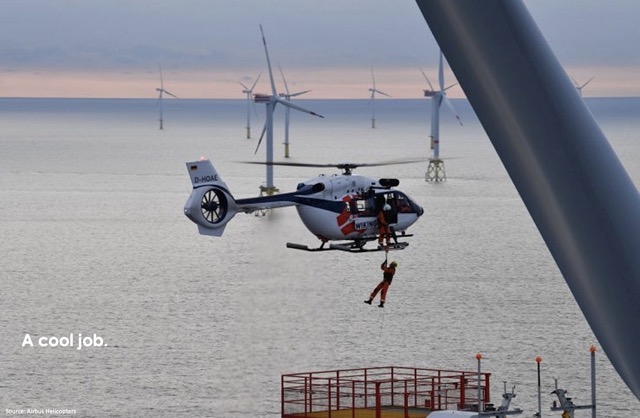
Also we need to have a global workforce working globally – which isn’t helped if we impose excessive visa restrictions. When the cell phone systems were first built out they were often installed by Indian engineers travelling from country to country. I know we are seeing some of this in renewables – but we will need to ramp it up otherwise we just won’t have enough technicians. Even with investment in automation, remote monitoring and control, and AI you can tell your kids to be renewable energy technicians and installers if they want a good job.
Two other types of risk to think about relate to the E, the S and the G in ESG. Firstly there is the need to recognise and address the other environmental risks other than simply climate change, and in particular that means biodiversity. There is no point solving the energy problem or even the climate problem if we have destroyed bio-diversity. Every project, and I mean every project, really does have to be nature positive – and soon the finance world will be demanding it. There are some really interesting concepts out there such as growing oysters around the foundations of offshore wind farms to increase bio-diversity, create food and reduce foundation erosion.

Then of course there is something that the engineers amongst us were not trained to think about and that is the need for a just transition, one that gives everyone modern, affordable energy, and results in an energy system that is fairer and empowers people rather then disempowers them. Failure to do that really adds to social and political risk.
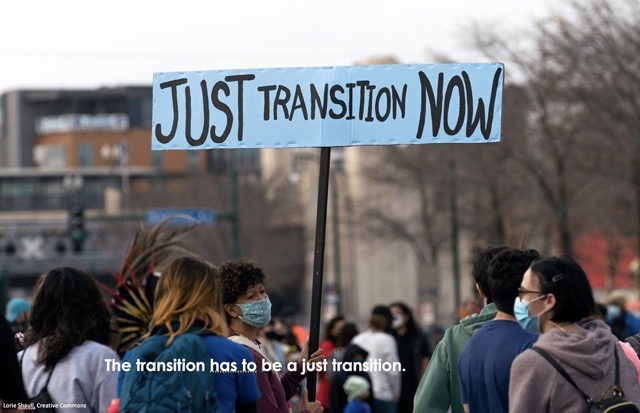
So to try and sum up:
There are real grounds for optimism that we can get to a net zero power system. There are no fundamental technical problems. The power of ‘deploy, deploy, deploy’, S curves and the overlapping drivers of sustainability, cost, energy security and now the direction of the finance sector, all suggest that it is possible. Yes, it may seem that we are a long way off target, and there is no doubt that the task is huge, but then so were previous transitions, we just didn’t think about those as much. Clearly political commitment is important, both national and international – and we do need better policy support. But I think the economics of the situation will counteract even a luke-warm political environment. Politicians are generally followers rather than leaders. Yes of course, there are headwinds and barriers that we all need to work together to resolve, Yes, companies will come and go. Yes, there will be errors and losses of course technical failures and even dead-ends. That is the nature of change. But at the same time we have greater clarity about the end game, greater transparency, more resources, and digital technology.
Having witnessed the first half of this energy transition, and made some small contributions to it, I am looking forward to witnessing as much of the second half of it as I can. I think it will be exciting and even if we don’t quite get to net zero, we will get a long way towards it. There is no doubt the world of 2050 will be very different to the world of 1950, just as the world of 1950 was very different to the world of 1850. It will be better in many ways and in large part that will be down to efforts of everyone in this room and in the renewables industry.
I hope that some of what I have said has been interesting. I am sure that you will have a productive and enjoyable day talking about some of these issues in more detail and I look forward to talking to some of you later in the day.
Monday 5 February 2024
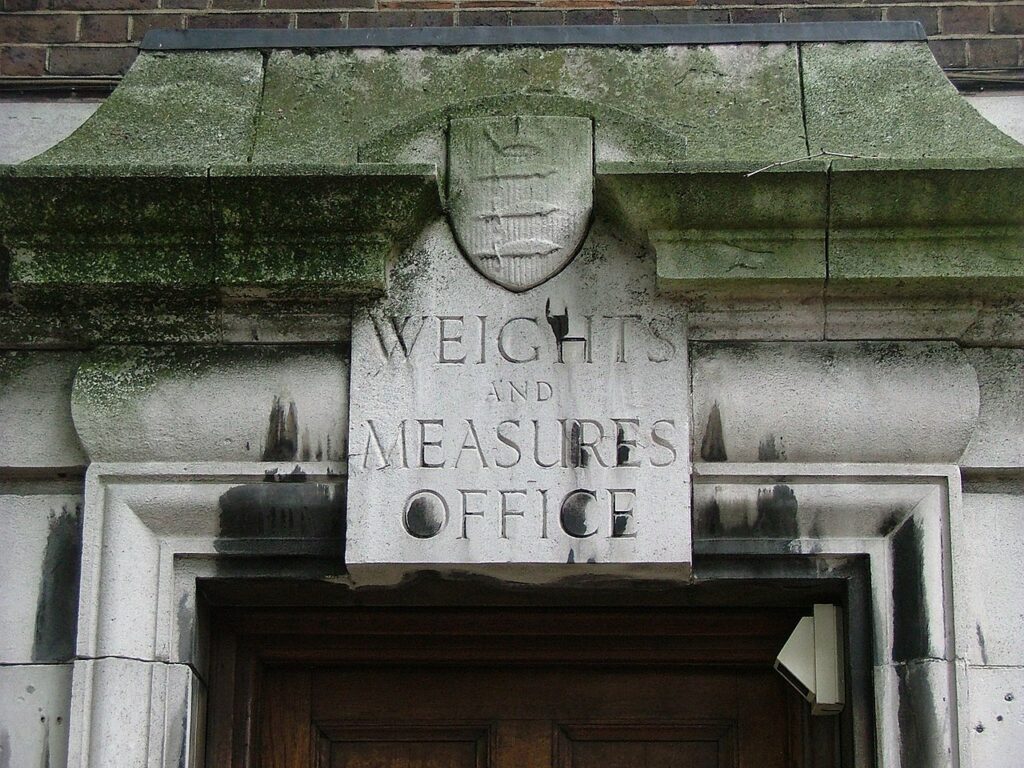
Photo credit: Nico Hogg, Creative Commons Attribution 2.0 Generic
It is now becoming widely accepted that increasing the flow of investment into energy efficiency is essential for hitting climate targets, as well as addressing issues including fuel poverty and energy security. Much of that investment will have to come from the private sector, from institutional investors. So how do institutional investors view energy efficiency and how could metered efficiency help increase the flow of investment into efficiency?
It has to be said that for many, (if not most), institutional investors, energy efficiency remains a bit of a mystery. When questioned about efficiency, many investors will say something like, ‘oh you mean solar panels and stuff’, which is not what we fundamentally mean by energy efficiency i.e. doing the same (or more) with less energy input. Back in the early 1990s the wind industry was in a similar position, early wind farm developers, (the author included), could only find one bank in London that knew anything about wind power and that was a US bank that had financed wind farms in California. Now there is a plethora of banks and financial institutions who understand every detail of the multi-billion pound wind business.
This lack of knowledge about efficiency amongst financial institutions is changing as they come under increasing regulatory and customer pressure to disclose climate related risks and directly address climate change through their investments and lending. Institutions that either own or lend to property portfolios, whether they be houses or large commercial buildings, in particular are increasingly recognising the potential for energy efficiency improvements as a way of mitigating climate risk.
There are four reasons why financial institutions are getting more interested in energy efficiency:
- energy efficiency represents a large potential market.
- Improving efficiency reduces risks in two ways:
- firstly, increasing energy efficiency improves the cash flow of clients, thus reducing their risk.
- secondly there is the risk of financing assets that become stranded as energy efficiency regulations are tightened. For example, tightening Minimum Energy Performance Standards exposes owners to the risk of owning an asset that cannot be sold or rented in future.
- improving energy efficiency has a direct impact on reducing emissions of carbon dioxide and other environmental impacts such as local air pollution and therefore can be a key part of Environmental, Social and Governance (ESG) programmes.
- finally, and probably most importantly, bank regulators are increasingly requiring institutions to estimate and disclose climate related risks and energy efficiency can reduce risks.
The barriers to investing in energy efficiency are well documented in thousands of papers and articles. For financial institutions the main barriers include, as well as the lack of understanding and capacity referred to above: the small scale of most energy efficiency projects, their heterogenous nature, lack of data, and performance risk – the risk that projects do not deliver the energy savings projected during the design process. Importantly as well, energy savings are the absence of something, a counterfactual, and invisible which is harder to deal with than for instance the production of energy. All these factors combine often to put energy efficiency into the more difficult box. If you control £100 million, and that is generally considered a small fund, it is easier to buy a couple of wind or solar farms than it is to originate, develop and deploy capital into hundreds of LED lighting installations or new heat pumps for example.
The lack of data and performance risk are major barriers to financial institutions. It is not so much that energy efficiency projects have risks, contrary to some opinions of course they do have risks – like all investments, it is more that the lack of data, (past, present and future), means that they are uncertain. Risks can be understood and mitigated, uncertainties are much harder to deal with. The lack of data on what actually happens when energy efficiency measures are installed would also inhibit Distribution Network Operators even considering energy efficiency measures as an alternative to network upgrades, even if they were enabled and motivated to do so by regulations, (which at the moment they are not).
For most of its history the energy efficiency industry has survived on ‘deemed’ savings – the level of savings that an engineering assessment says the projects will produce. Even with the advent of Measurement and Verification, (M&V), and the International Performance Measurement and Verification Protocol (IPMVP), very few energy efficiency projects were measured to see what the actual savings were.
Metered efficiency, the idea of establishing a common system of ‘weights and measures’ for measuring energy saved, emerged out of California about ten years ago. It is now being used widely across the US, allowing utilities and regulators to measure the effectiveness of energy efficiency programmes as well as the utilities to better understand and manage the changes in their load curves brought about by the adoption of roof top solar. For investors, (of all types from institutions to households), it offers the possibility of only paying for what you get, ‘pay for performance’, which is much better than paying for stuff and hoping that some energy savings result. It also opens up the possibility of having contracts that resemble Power Purchase Agreements (PPAs). PPAs are well understood and are a very bankable proposition, you can raise capital on the back of a PPA from a good counterparty. We could have EEPAs, Energy Efficiency Purchase Agreements, which define the amount of energy efficiency to be delivered, within some boundaries, and how much will be paid per unit delivered. They would look very similar to PPAs. Pay for performance contracts such as EEPAs would also serve to greatly improve the quality of energy efficiency projects being sold, if the supplier was only being paid on what was delivered they would have a bigger interest in delivering quality projects and maintaining savings over time. Suppliers delivering bad projects would rapidly go out of business. Pay for performance contracts would also avoid the need for costly and complex Energy Performance Contracts, (EPCs), from Energy Service Companies (ESCOs), which are used to put performance risk onto the contractor but in which they take a hefty margin to offset the risk of non-performance. With metered energy savings and pay for performance you simply pay for what is delivered, just like when you buy energy.
For utilities and regulators metered energy savings offers the possibility of really understanding the effect of energy efficiency and flexibility measures on an hourly (or less) basis. Targeting the reduction of energy use at times when grid generation is high carbon, could have a major impact on reducing overall emissions. There is not a lot of point saving energy in the middle of the day if all the load is capable of being met by roof top solar, you want to save energy when the gas (or other fossil fuelled) generators are on. Such precise targeting requires understanding the time aspect of energy efficiency, energy savings are not as we often implicitly assume, spread equally over 24 hours a day. In the right regulatory environment, which we don’t yet have in the UK, distribution companies could use metered energy savings to invest in energy efficiency projects with a better economic, and social, return than investing in network upgrades such as new wires and sub-stations.
In conclusion, metered energy savings can make energy efficiency more like energy supply, and therefore make it more investable for financial institutions, energy distribution companies, and end customers. The RetroMeter project, supported by Ofgem’s Strategic Innovation Fund and delivered by a consortium consisting of: Electricity North West; Energy Systems Catapult; Carbon CoOp; Manchester City Council; and ep Consultancy; is developing an approach to metered efficiency savings and applying it to a residential retrofit project in Manchester with a focus on heating energy. As well as testing different approaches to metering energy saving, it is looking at the benefits for different stakeholders from the householder, to the Distribution Network Operators, to the health service, as well as developing business models that could help bring in more investment into energy efficiency through mechanisms such as pay for performance.
Details on the RetroMeter project can be found on the Electricity North West website
https://www.enwl.co.uk/future-energy/innovation/strategic-innovation-fund/retrometer/retrometer-discovery-phase/
Friday 22 December 2023
The following is the text of my presentation made in Cairo on the 18th December 2023 at a UNIDO organised event presenting the results of a project on ESCO contracts completed by a consortium consisting of Eenovators, ep Group, Sheeta Law and Eng. Mohamed Atef.
The problem
It is always important to start with defining the real problem that we are trying to solve. It is important to focus on that and not be distracted. The problem we are trying to solve, as energy efficiency and ESCO professionals, was defined perfectly in COP28, and that is to increase the average rate of reduction in global energy intensity to 4% per annum, compared to historical levels of 1% to 2%. At the COP more than 110 countries committed to double the rate of improvement in energy efficiency by 2030.
How do we increase the rate of improvement in energy efficiency? Although better energy management, i.e. better managing what we already have, can undoubtedly help, the real key is investment in projects that improve energy efficiency. The IEA’s surveys of energy efficiency investment show this is running at about $600 billion per annum. We need to triple this rate of investment and bring it more in line with the investment in energy supply.
How do we increase investment in energy efficiency? To answer that we need to consider a systems view of the process of investment in energy efficiency, which as in other areas, goes through generic five stages, starting with origination, (the idea), and goes through development, underwriting, financing, building and operating. We know from many, many studies in all sectors, in all countries that the potential for energy efficiency projects is huge. Any decent energy efficiency consultant can go into almost any building or industrial facility and find some potential energy efficiency projects. The problem is that there is a huge ‘development gap’ between the potential, and having practical, financeable projects. Energy efficiency is no different to other energy sources in this respect, there is a big gap between a geologist saying for example, ‘here is an oil field’, and having a functioning, producing oil well. The potential for energy efficiency is huge, the volume of projects being developed at any time is much, much smaller, and the volume of projects being financed at any time is much smaller again.
It is clear that we need to grow the volume of projects under development and the volume of projects being financed. So what drives those volumes? They are driven by four factors: the demand for energy efficiency projects; the capacity to develop projects; the capacity to finance projects; and the volume of finance available to fund the projects. The demand for energy efficiency is critical, decision makers, whether in industry and commerce or in the residential market, need to demand projects. This requires them to know what is possible and what the advantages are likely to be, and we all need to recognise that strategic benefits e.g. increased building value or improved health outcome, are more likely to make decision makers demand energy efficiency projects than just energy cost savings.
Developing projects requires technical and financial skills, as well as human skills – development is a process that can be taught. Even if projects are being developed there needs to be capacity to finance projects which requires building skills in the finance industry. When the wind industry started in the early 1990s there was very little capacity in the finance industry to finance wind projects, at one time the only bank in London that knew anything about wind power was Bank of America because they had financed wind projects in the USA.
The final lever is the volume of finance, this can of course be finance that is labelled as ‘energy efficiency’, which can be made available through various financing instruments, or it can be general finance such as regular commercial loans that is applied to energy efficiency projects. Ultimately the volume of capital is not a constraint because the capital markets are so large – it is more about the demand and the capacity to develop and finance projects.
What is an ESCO?
The Global ESCO Network has defined an ESCO and highlights three critical aspects that distinguish ESCOs from other types of companies. These are:
– ESCOs deliver energy services and energy efficiency improvement measures in a user’s facility
– The improvement measures are based upon a holistic analysis of the users energy and resource demands
– The payment for the services is based, (either wholly or in part), on the measured and verified achievement of energy efficiency improvements and of any other agreed performance criteria.
History of ESCOs
It is often said that ESCOs were invented in the USA in the 1970s. This is an ocean and 200 years away from the truth. ESCOs were invented by Matthew Boulton, who partnered with James Watt in the 1770s. Boulton and Watt sold Watt’s more efficient steam engine to mines, where they were typically used for pumping water, and took payments based on the savings in coal. These were the first ESCO shared savings contracts.
The modern ESCO of course did start in the 1970s with two models emerging – in the USA the Energy Performance Contract (EPC) developed and in Europe the ‘chauffage’ or heat service model was more common. In the 1980s the EPC model spread into Europe, in the UK both the oil majors BP and Shell created subsidiaries offering EPCs although the most common projects were replacing coal or oil fuelled boiler houses with new, automated gas fired boiler houses which reduced energy and labour costs.
In the 1990s the USAID spread the ESCO model around the world, although it has to be said that they promoted the concept but didn’t really talk about the finance aspects, which in the USA at least was usually based on cheap municipal or federal funds, funds that clearly not available outside the USA. In many markets utilities entered the ESCO market, proclaiming themselves as energy service companies and ESCOs as the future. This all went into reverse after the collapse of Enron, where Enron Energy Services was an innovative form of ESCO that provided both energy supply and energy efficiency projects on a service basis. The models pioneered by Enron Energy Services at least in the UK, went onto success under RWE Solutions. Following the collapse of Enron utilities came under pressure to focus on core business and retreated to that, selling off or closing their ESCO arms.
In the 2010s interest in energy efficiency started to grow again and we saw the emergence of the Super ESCO model, pioneered by Dubai in the form of the Etihad Super ESCO. We also saw some innovation in contract forms emerging but EPCs remained the dominant contract form.
According to the IEA the global ESCO market accounted for $40 billion of investment, so about 7% of the total investment in energy efficiency. Although the energy efficiency industry gets very excited about ESCOs, at $40 billion of investment, the whole industry remains very small. The oil majors Shell and BP have a combined annual capex of circa $38 billion and Aramco has a capex of circa $52 billion. If we are going to triple the investment into energy efficiency we need to (at least) triple the capital invested through ESCOs.
ESCO models
There are varieties of ESCO models. Every text book or paper on ESCOs presents the ‘shared savings model’ and the ‘guaranteed savings model’. Most contracts in practice are guaranteed savings – early shared savings contracts in the US often ended up in bankruptcy of the ESCO or expensive legal arguments about the actual level of savings. Shared savings are often presented as a magic bullet that helps finance energy efficiency but advocates of this model forget that the ESCO, any ESCO, has a limited balance sheet, (however big), and can’t take on more and more finance as they do more and more projects. Also the model requires them to effectively take on the credit risk of the client, something that banks and financial institutions are better qualified to do. ESCOs need to use their expertise to take and manage technical risks, banks need to take financial risks. ESCOs financing projects themselves can work if there is a way of recycling the cash flows through a forfaiting facility.
The other ‘traditional’ ESCO model is ‘chauffage’ or Outsourced Energy Management. In this model the ESCO builds a stand-alone plant, often a boiler house or a Combined Heat and Power (CHP) system, and supplies heat, (and power for a CHP project), to the client who pays on a per unit basis. This model can be applied to any utility including heat, chilling, industrial gases, treated water and compressed air. It has the advantage of having a clearly isolated plant and the ability to meter the output. The Enron Energy Services contract referred to above, and subsequently implemented by RWE, was primarily of this form and required investment in new utility supply infrastructure, and supplied all the utilities used in the Guinness breweries including: steam, chilled water, compressed air, nitrogen, treated water, effluent. By implementing these measures in the Guinness brewery in London energy use was reduced by circa 40%.
In recent years there has been a flowering of innovation in ESCO contracts and an alphabet soup has developed including: MESA – Managed Energy Services Agreement, ESA – Efficiency Services Agreement, and MEETS – Metered Energy Efficiency Transaction Structures. These contract forms address some of the problems with Energy Performance Contracts but have not yet scaled as much as ‘traditional’ EPCs.
We have also seen the growth of Lighting as a Service (LaaS), which has been enabled by the big energy savings that come from installing LED lighting to replace conventional fluorescent lamps. LaaS companies carry out surveys, design new lighting systems, maintain them and charge the client a fixed fee over an extended period. The fee is typically less than the savings achieved.
A promising new area that needs to grow is Cooling as a Service, CaaS, in which the ESCO installs more efficient cooling technology and charges on a service basis. CaaS is going to be critical, especially in hot countries where demand for cooling is growing fast such as in the Middle East, Africa and Asia. Although CaaS is often presented as being about air conditioning for buildings, it should not be forgotten that establishing and maintaining cold chains for the supply of food and other critical supplies such as vaccines, is critical for development – improving living conditions, health and avoiding waste, as well as reducing energy demand from cooling which are growing rapidly. CaaS has a vital role to play and will become a huge and critical part of the ESCO market.
We are seeing a general growth in ‘as a service’ business models in many aspects of life, including mobility as a service, and there is no reason they cannot be applied to other parts of the energy system eg more efficient motors – Motors as a Service(MaaS) is an untapped market for electric motor suppliers.
Risks
It used to be said that energy efficiency projects had high returns and little or no risks. As a 1980s energy efficiency text book said:
‘Energy efficiency has high returns and virtually no risk’.
This myth continues to be repeated and is not helpful for developing the market. If they really had high returns and no risk everyone would be investing in them. Now we have better understanding of the risks of energy efficiency projects which include: performance risk; equipment risks; Operations and Maintenance risks; weather risks; and changes in production volume or mix, or changes in the use of buildings. We saw the effect of the latter during the pandemic where many buildings were completely empty for long periods, and indeed even now many office buildings are operating at a fraction of the occupancy they enjoyed pre-pandemic. Any ESCO contracts covering such buildings have been severely disrupted and Measurement and Verification (M&V) techniques have been sorely tested.
ESCO contracts of course are a way of allocating and managing risk. Clients, and ESCOs need to understand the risks and be reasonable about where they are allocated and how they are mitigated.
Advantages and disadvantages of ESCO contracts
ESCOs are great at bringing capacity and skills in energy and utilities to organisations that are focused on their core activities, and not energy. They can bridge the development gap between concepts for projects and fully developed, bankable projects. They can also bring finance to projects.
However, ESCOs are not the answers to all the problems with energy efficiency. ESCO contracts have their limitations and these need to be recognised alongside their benefits. They can only be applied to large projects because of the high transaction costs, and they need long-term stability in the client base such as afforded by public sector estates, They need to be applied in the right circumstances but not considered as ‘the answer’ to increasing the investment into energy efficiency. They are an important tool but not the only tool.
Super ESCOs
The Super ESCO is a rapidly emerging model that helps address many of the problems of growing the ESCO market. Pioneered by the World Bank and other International Financial Institutions we now have Super ESCOs in Dubai, Etihad Super ESCO, and Saudi Arabia, TARSHID. It is great to see these state backed companies in the Arab region developing the market for ESCOs.
Super ESCOs can develop projects at scale, enforce standardised contracts and processes, arrange finance at scale, and develop capacity in the ESCO market. In the next few years we should see additional Super ESCOs being formed, including in Kenya.
ESCOs in different regions
In the USA there has been a long-established market for ESCOs in Federal and State government owned buildings. In the Federal market, the Federal Energy Management Programme, (FEMP), provides assistance, capacity building and template forms and contracts. It also provides a standardised procurement system. Federal agencies are required to assess all opportunities for energy efficiency every four years which helps drive demand for new projects. At the state level the main market is the ‘MUSH’ market, Municipalities, Universities, Schools and Hospitals. Often financing comes from municipal bonds which provide cheap finance.
China accounts for 60% of the global ESCO market. Development of the market started in 1998 with World Bank and Global Environment Facility support which came together in an ESCO Loan Guarantee Scheme with funding of USD 22 million. There are now a reported 6,500 ESCOs employing some 760,000 people but 80% of them are small or micro businesses so the number actually implementing significant projects is considerably smaller. Unlike the US, 90% of the market is in the private sector and 55% of projects are in industry where there has been a strong focus on industrial waste heat to power installations. The 2010 legislation is supportive of ESCOs, which have to be certified and get special tax treatment, and created a special ESCO fund. Interestingly the Beijing Environmental Exchange allows trading of future revenue streams of ESCO contracts which is a really useful way of allowing the ESCOs to recycle capital.
In the Middle East, as already mentioned, there are world leading Super ESCOs in the form of Etihad Super ESCO in Dubai and TARSHID in Saudi Arabia. The Etihad Super ESCO was created by DEWA, the Dubai Electricity and Water Authority, and is closely allied to the demand side management policy. The Super ESCO creates and develops projects at scale, secures finance at scale, and uses commercial ESCOs to undertake the work under Energy Performance Contracts. DEWA has also established standards and certification programmes for ESCOs, energy audits and Measurement and Verification (M&V). These have helped develop the market. In Saudi Arabia TARSHID is focused on government buildings which provides a large pipeline with much potential as many of the buildings were constructed in the oil boom years and are very inefficient.
Lessons learnt
In all of our work around the world on scaling energy efficiency, including ESCOs, we came to the conclusion that in order to be successful in scaling it is necessary to put in place four pieces of a jigsaw, what we call the jigsaw of energy efficiency financing. The four parts are:
– Develop pipelines – we need pipelines at scale, not just one building here and there
– Standardisation – of contracts, technical solutions, processes and under-writing
– Build capacity – in the demand side, the supply side and the finance sector
– Provide finance – both development finance as well as project finance.
ESCOs, and particularly Super ESCOs, can provide all these pieces. They can build pipelines at scale, but this can be greatly helped by the public sector taking bold procurement decisions and providing portfolios of buildings for improvement. ESCOs, and particularly Super ESCOs, can drive standardisation. They can also build capacity in the sector. ESCOs can provide development capital, which is their risk capital, but the public sector can provide additional development capital through Super ESCOs or mechanisms such as guarantee schemes.
The future for ESCOs
The future looks bright for the ESCO sector but in order to achieve the success we know is possible, and grow the industry at least in line with the target of tripling investment in energy efficiency, policy makers, ESCO professionals and the finance sector need to work together to ensure that the four pieces of the jigsaw ae in place, This requires co-ordinated policy and capacity building work along with dedicated financing instruments. It also requires a realistic assessment of the areas where ESCOs can help, and those areas where the conventional EPC offering cannot work. In those areas we need innovations in contract form and business model, as in ep Group’s ESCO-in-a-box which is designed as a simplified, and repeatable business model to address the energy services needs of the SME sector.
Friday 17 November 2023
The EC has published the Energy Efficiency Financial Institutions Group’s (EEFIG) report on applying the Energy Efficiency First principle in sustainable finance, for which I was the lead alongside Peter Sweatman of Climate Strategy. I think this is one of the most important, if not the most important report, to come out of EEFIG’s work – which over ten years was extensive, very influential and covered many aspects of energy efficiency finance.
The Energy Efficiency First principle is EC policy and is defined as:
‘energy efficiency first’ means taking utmost account in energy planning, and in policy and investment decisions, of alternative cost-efficient energy efficiency measures to make energy demand and energy supply more efficient, in particular by means of cost-effective end-use energy savings, demand response initiatives and more efficient conversion, transmission and distribution of energy, whilst still achieving the objectives of those decisions.’
So why is applying it in financial institutions, and this report, so important? Every day, and every hour, even as you read this, decisions are being made in investment committees and credit committees to invest or lend money for all kinds of energy using assets. The level of energy efficiency of those assets determines our future energy demand, and of course emissions, for years and even decades to come. This is particularly true for long lived assets such as buildings and industrial facilities but is equally true for shorter lived, smaller assets and equipment.
Financial institutions can influence these decisions by setting investment and lending policies and procedures that ensure energy efficiency performance is at least considered in the investment or lending processes, and options evaluated. If the money says you need to reach a certain level of energy efficiency for the project or asset you will do what is needed to get the money. Why should financial institutions do that? Surely this is just another level of bureaucracy that will upset customers who have to leap through seemingly ever more hoops. Other than the fact that it is the right thing to do, financial institutions have real motivations to do this. They are increasingly being driven to decarbonise their portfolios by reporting standards such as the EU Taxonomy and TCFD. Furthermore, improving energy efficiency reduces financial and physical risks, and in some asset classes like houses higher levels of energy efficiency have been shown to be linked to higher value. Energy efficiency can reduce risks and increase value.
Applying the Energy Efficiency First principle in financial institutions can help accelerate energy efficiency and decarbonisation within their portfolios compared to being passive and relying on customers (of all sorts), who themselves may not know what is possible in terms of cost-effective energy efficiency, or the multiple benefits of energy efficiency measures can bring. This does mean a more proactive approach from the financial institutions and does bring them further forward in the process of planning, designing and financing an asset or project, (the earlier a high level of energy efficiency is incorporated the easier and cheaper it is to implement).
In order to apply the Energy Efficiency First principle financial institutions need to set policies, understand the potentials within relevant sectors they operate in, build their own capacities, and have tools to assess energy efficiency of underlying assets as well as portfolios. Energy efficiency also needs to be integrated into wider sustainability principles and policies rather than just be bolted on. Perhaps surprisingly energy efficiency is often not mentioned in sustainability policies and systems, even though it is the most cost-effective way of addressing emissions reduction. This is another example of how invisible energy efficiency is.
A financial institution wanting to implement Energy Efficiency First needs tools at policy, portfolio and project levels. Leading public and private financial institutions, including amongst others, the EBRD, the EIB, the World Bank, ING, Aviva, and Allianz, are putting these kinds of tools into action. Technology has a big role to play in evaluating projects and portfolios and a number of providers are offering or developing tools.
The EEFIG Energy Efficiency First report sets the scene for applying the principle in financial institutions, makes the arguments why they should apply it, provides showcase exemplars, sets out processes, and gives examples of tools in use at policy, portfolio and project level. It also makes recommendations for policy makers and financial institutions. Energy Efficiency First does not mean that in every case all possible energy efficiency measures will be implemented, there are often technical and financial cases that prevent this. What it does mean that at some point in the process of financing an asset you have to stop and assess the energy efficiency performance of the underlying asset and see if more can be done. That would stop many of the missed opportunities that are happening every day and every hour and ensure more of the cost-effective energy efficiency potential is implemented.
If we can scale the use of the Energy Efficiency First principle within financial institutions it will accelerate improvements in energy efficiency and reduced emissions, and avoid ‘lock in’. It will also help shift energy efficiency financing from a niche and still very small ‘add on’ to everyday normal practice. The next step in the process of scaling the Energy Efficiency First principle in financial institutions is to translate the general guidelines into specific guidelines for each sub-sector. Real estate is different to private equity for instance and needs specific guidelines. This is best done through the sector associations to ensure buy-in and dissemination.
Scaling the use of the Energy Efficiency First principle within financial institutions is the next important task. At ep group we continue to work with financial institutions and others to accelerate investment into energy efficiency and can assist in applying the Energy Efficiency First principle.
The report can be found here:
https://tinyurl.com/kzmpj7vp
Thanks to all the Working Group members and the consortium team for their work in this project.
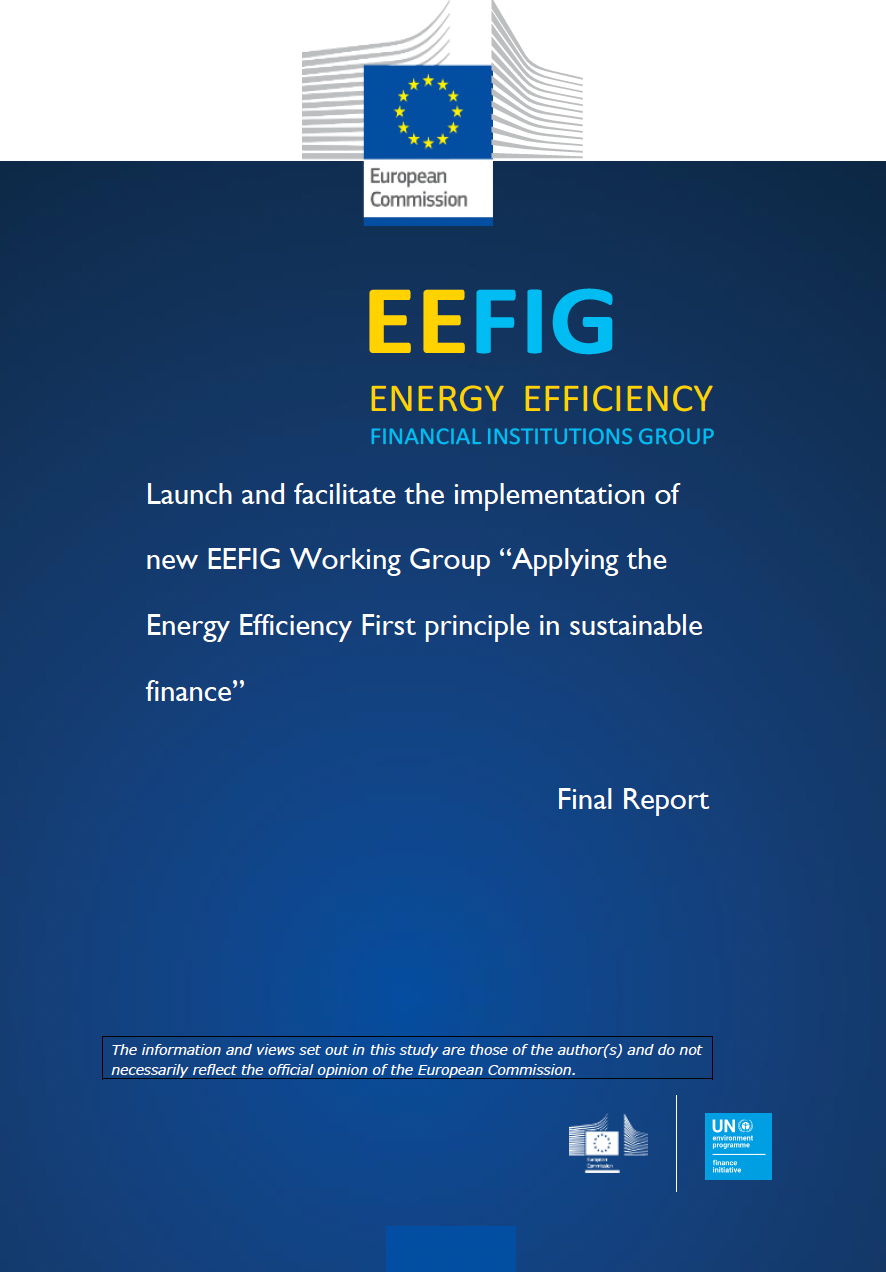
Dr Steven Fawkes
Welcome to my blog on energy efficiency and energy efficiency financing. The first question people ask is why my blog is called 'only eleven percent' - the answer is here. I look forward to engaging with you!
Tag cloud
Black & Veatch Building technologies Caludie Haignere China Climate co-benefits David Cameron E.On EDF EDF Pulse awards Emissions Energy Energy Bill Energy Efficiency Energy Efficiency Mission energy security Environment Europe FERC Finance Fusion Government Henri Proglio innovation Innovation Gateway investment in energy Investor Confidence Project Investors Jevons paradox M&V Management net zero new technology NorthWestern Energy Stakeholders Nuclear Prime Minister RBS renewables Research survey Technology uk energy policy US USA Wind farmsMy latest entries
- ‘This is not the end. It is not even the beginning of the end. But it is, perhaps, the end of the beginning’
- You ain’t seen nothing yet
- Are energy engineers fighting the last war?
- Book review: ‘Stellar’ by James Arbib and Tony Seba
- Oh no – not the barriers again
- Don’t assume ignorance, sloth, bias or stupidity
- Collaborations start with conversations


